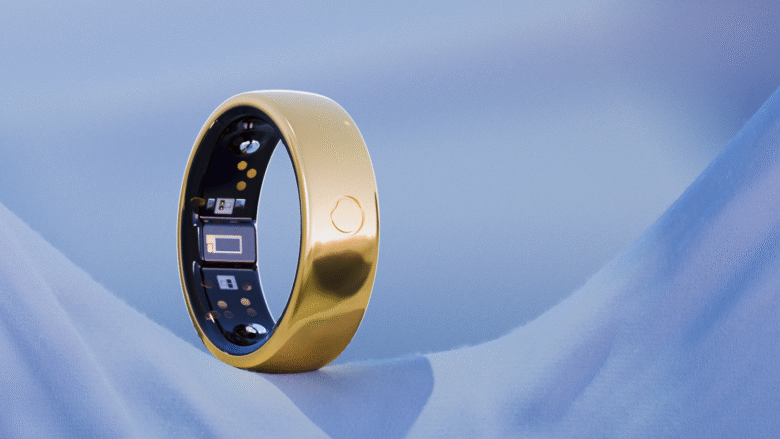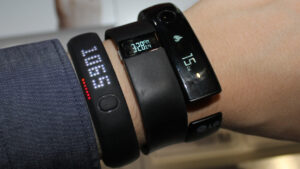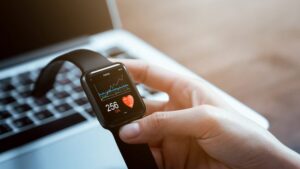
If you’re tired of straining to see your screen or dealing with bulky wristbands, smart rings may provide a stylish solution that might even offer more functionality than smartphones.
Most feature sensors that monitor various health-related metrics, including heart rate variability (HRV), body temperature, sleep patterns, oxygen levels in blood and activity levels.
Health Monitoring
Smart rings offer an attractive alternative to bulky wearables, concealing advanced hardware for health tracking, sleep tracking, PPG heart rate detection and more in their compact designs.
Some brands like Oura are offering up to eight days between charges. Their app has also been upgraded so users can more easily gain access to daily insights and long-term trends.
Wrist-worn trackers may be more suitable for workouts, while rings may provide greater accuracy when used for other activities. “For instance, rings may provide more accurate readings for resting heart rate and time during walking due to fingers having larger networks of blood vessels than wrists,” according to Sackin. However, rings may result in less accurate measurements during exercises due to melanin in their skin which absorbs light sensors causing more accurate readings from other sources – this issue particularly concerns people of darker skin tones.
Fitness Tracking
Smart rings may appear to be mere jewelry pieces, but their advanced sensors enable round-the-clock monitoring of vitals that maximize physical potential. Not only are these discreet wearables lightweight and more fashionable than chunky fitness watches but their designs may even look stylish!
Some models also provide extra functions, like connecting to smartphones to receive app notifications or contactless payments; monitoring heart rate variability to detect stress; or tracking workout intensity so as to know whether or not your exercise session is challenging enough.
Oura ring claims to be one of the most advanced devices on the market, offering up to eight days between charges and including features like cardiovascular age estimation using light-sensing technology and measuring arterial stiffness. But wrist-based devices still outshone Oura in terms of accuracy and features such as mapping routes, music streaming and productivity tools.
Sleep Monitoring
Smart rings may be better-suited to sleep tracking than traditional wearables because they provide greater data with fewer sensors. Devices like Oura Ring use motion tracking, heart rate information, body temperature monitoring and snoring monitoring to estimate sleep stages and provide actionable insights for improving overall quality.
But these sensors have their limits, as they cannot replace polysomnography (PSG) tests or more sophisticated devices that measure brainwaves and eye movements associated with REM sleep onset. Still, devices like Oura Ring and Amazfit Helio Ring do provide a comprehensive overview of your sleep by way of hypnograms and confusion matrices, with Oura offering subscription services that enable users to analyze and gain further insights from sleep data over time – enabling people to make more informed lifestyle decisions based on individual sleep cycles.
Environment Monitoring
Most smart rings connect to smartphones through an app that displays data on-screen or sends it directly to your notification tray. Some smart rings offer gesture control so you can launch apps or activate features with simple movements; others even include emergency SOS buttons to contact emergency contacts and display your location.
Smart rings utilize PPG sensors to track blood oxygen levels, body temperature and heart rate. However, these devices may display inaccurate readings if worn too tightly or finger is cold as this causes blood vessels to narrow and disrupt sensor signals. They may also become susceptible to motion artifacts during moderate exercise – our first generation Oura ring remains research-backed accurate; its latest iteration, Oura Ring 4, includes improved sleep cycle tracking along with symptom radar and guided meditations as well as haptic feedback system that adapts to each hand as well as NFC payment technology enabling payment via NFC technology!
Activity Tracking
Most smart rings use accelerometers, gyroscopes and other sensors to track movement, calories burned and stress levels. Some even come equipped with optical heart rate sensors to measure blood flow and assess stress.
Some tracking tools even gamify activity tracking by rewarding achievements and motivating users to set higher goals, helping to motivate users into being more physically active while improving sleep patterns – as well as spot abnormalities which require further examination by medical practitioners.
While most smart rings offer comprehensive health monitoring capabilities, some require a subscription in order to access all features and data available – this is common practice within the fitness industry but can make the device feel less valuable; oura Ring 4 provides extensive insights but requires paying an ongoing monthly fee in order to unlock them all.
Communication
Health and fitness tracking remain key wearable functions, while entertainment and computing capabilities are expanding into new markets and consumer segments – including emerging form factors like smart rings, glasses and shoes.
Smart rings provide users with notifications for calls, texts and app alerts without them needing to pull out their phone from pocket every time there’s something important coming through. Gesture controls may also allow for accessing music playback or taking hands-free pictures as well as disarming alarms – many even come equipped with NFC capabilities so contactless payments are possible too!
However, due to their small sensor area and battery limitations, smart rings may only provide accurate readings for heart rate and other metrics when worn correctly. Optic sensors in particular are susceptible to false readings if the wearer’s hand is cold (as blood vessels constrict more when temperatures drop) as well as motion artifacts when exercising which could provide misleading results.




